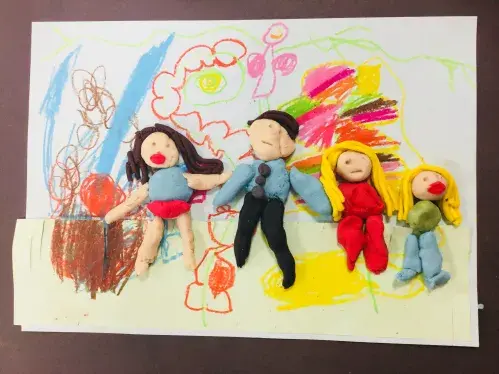What is Art Week?
Each year in the summer term we give our pupils the opportunity to express themselves creatively around a different theme.
Every class is inspired by a different artist. They learn about the work and life of their chosen inspiration, as well as explore the media and messages most common in their work. This results in every children producing their own piece of art.
There is also an opportunity for children to contribute to a whole school piece, again inspired by a famous artist. Artists have included Rana Begum, Hundertwasser and Yayoi Kusama.
At the end of the week, all of the week is displayed in a gallery for the community to view.










Art Week 2023 - Raise Your Voice
This year for Art Week we were inspired by the theme 'Raise Your Voice'. In previous years we have thought about ourselves and the environment, so this year we reflected on how we could use our skills to change the world around us! We looked at artists who use their creativity to advocate for change and thought about causes that were important to us.
Artistic Influences included:
- Swift: Covid Memorial Wall
- Swallow: John Sabraw
- Nightingale: Olafur Eliasson
- Skylark: Keith Haring
- Kestrel: Bob and Roberta Smith
- Kingfisher: Stik
- Jay: Toyin Ojih Odutola
- Woodpecker: Jacob Lawrence
- Cormorant: Andy Warhol
- Puffin: David Shrigley
- Raven: Barbara Kruger
- Swan: Propaganda Posters
- Owl: Jenny Holzer
- Eagle: Shepard Fairey
Whole School Piece 2023 - What Are You Doing About It?

For this year's whole school piece, our school council voted on a cause that was important for them. After consulting their peers, they felt that climate change was what they wanted to raise their voice about.
They were inspired by the work of an artist called Jenny Kendler, specifically a piece called 'Birds Watching'. Her piece curated 100 eyes of birds that will go extinct in the next 50 years as a result of global warming.
Rather than use the eyes of birds, the children drew their own. We thought about how a 'staring' eye makes the viewer uncomfortable. They wanted the viewer of their 420 eyes to feel uncomfortable and question their role in our pupils' future, asking themselves 'what am I going to do about it?'